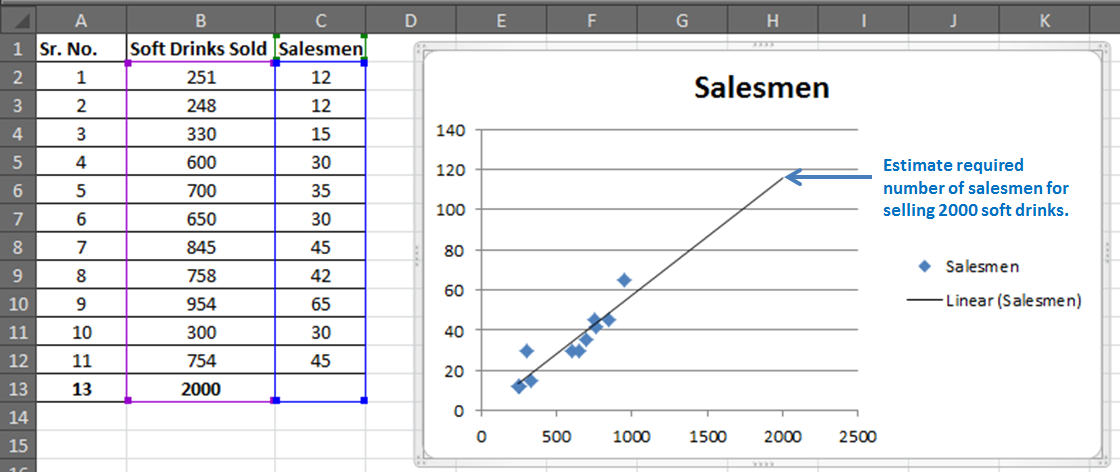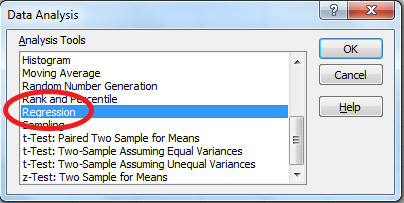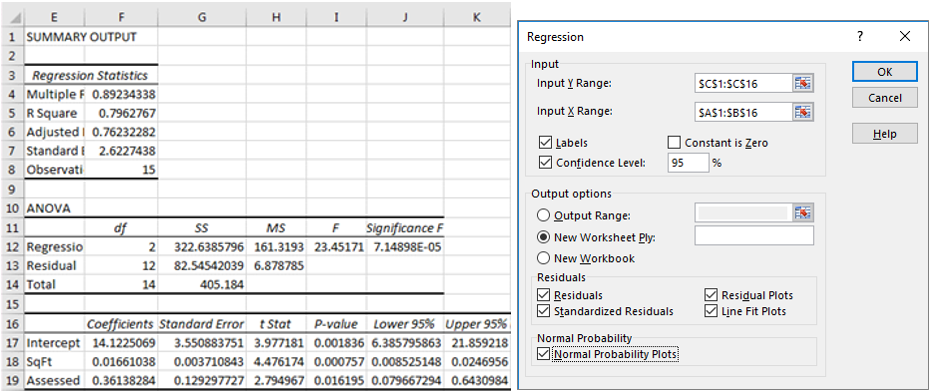
- #STANDARD ERROR MICROSOFT EXCEL DATA ANALYSIS REGRESSION .DLL#
- #STANDARD ERROR MICROSOFT EXCEL DATA ANALYSIS REGRESSION INSTALL#
- #STANDARD ERROR MICROSOFT EXCEL DATA ANALYSIS REGRESSION UPDATE#
- #STANDARD ERROR MICROSOFT EXCEL DATA ANALYSIS REGRESSION CODE#
- #STANDARD ERROR MICROSOFT EXCEL DATA ANALYSIS REGRESSION PLUS#
Before you use the Regression tool in Excel, you have to load the Analysis ToolPak.
#STANDARD ERROR MICROSOFT EXCEL DATA ANALYSIS REGRESSION INSTALL#
It is available when you install Microsoft Office or Excel. The Analysis ToolPak is an Excel add-in program. The Regression tool is included in the Analysis ToolPak.
#STANDARD ERROR MICROSOFT EXCEL DATA ANALYSIS REGRESSION PLUS#
The number of rows of data must be larger than the number of columns of data (x-columns plus y-columns).ĭo not specify a zero constant (b=0) in the function. It is not statistically valid for the number of rows to be less than the number of x (variable) columns. Case 2: The number of rows is less than the number of x-columns In Microsoft Office Excel 2003 and in earlier versions of Excel, you can find the Regression tool by clicking Data Analysis on the Tools menu. In Microsoft Office Excel 2007, you can find the Regression tool by clicking Data Analysis in the Analysis group on the Data tab. You can use the Regression tool instead of the LINEST worksheet function. Note The Regression tool alerts you to this problem and does not continue. Do not overlap the x- and y-value ranges when referencing cells in the formula. Normal statistical probability disallows the values in the x and y ranges to overlap (duplicate each other). If the x-value and y-value ranges overlap, the LINEST worksheet function produces incorrect values in all result cells. Workaround Case 1: The x-value and y-value ranges overlap You specify a zero constant (set the third argument of the LINEST function to True).

The number of rows in the input range is less than the number of columns in the total range (x-value plus y-value). The range of x-values overlaps the range of y-values. The output returned from LINEST may be incorrect if one or more of the following conditions are true: The Regression tool in the Analysis ToolPak may also return incorrect values. When you use the LINEST worksheet function in a worksheet in Microsoft Excel, the statistical output may return incorrect values. Only the different codes are listed.Ĭhart chart = (ExcelChartType.Line) Ĭhart.ChartTitle = "Chart with error bars" Ĭ = sheet.Range Ĭ(true, ErrorBarIncludeType.Plus, ErrorBarType.Fixed, 2) Ĭ(true, ErrorBarIncludeType.Both, ErrorBarType.Incorrect output is returned when you use the Linear Regression (LINEST) function in Excel Symptoms Step 2: Using the same sample data, I create another chart to show the error bars in Excel using C#. Workbook.SaveToFile("Sample1.xlsx", ExcelVersion.Version2010) Add trendline and datatable to the chartĬ(TrendLineType.Exponential) cs1 = chart.Series Ĭs1.CategoryLabels = sheet.Range Worksheet sheet = workbook.Worksheets Ĭhart chart = (ExcelChartType.ColumnClustered) Ĭhart.ChartTitle = "Chart with trendline and datatable" Screenshot: (R2=0.9688, which means the trendline is very fit to the data.)

#STANDARD ERROR MICROSOFT EXCEL DATA ANALYSIS REGRESSION CODE#
Step 1: I use the following code to create a column clustered chart (see the screenshot) with trendline and data table using the.
#STANDARD ERROR MICROSOFT EXCEL DATA ANALYSIS REGRESSION .DLL#
dll from free Spire.XLS to create Excel charts and add all the chart tools I mentioned above if you would like to try, you could get it from E-iceblue official website or Nuget.

#STANDARD ERROR MICROSOFT EXCEL DATA ANALYSIS REGRESSION UPDATE#
To me it looks like this behavior is the result of a recent Excel update as it only just started happening.Ĭreate Excel charts with trendline, error bars, data tables, data labels in C# using Spire.XLS The workbooks are protected and the charts produced are provided to clients and included in technical reports. I appreciate your interest, Sergei, as this is a serious problem for us because this occurs in workbooks that are used in a professional setting. So the problem occurs when the data for a Chart Range is all zero. Then if I then undo these changes (the 0 entries), the trendline formula appears attached to the second Chart Range trendline as one of the other contributors mentioned (the formula can be deleted - but not on a protected workbook of course). If I then ender a zero into all the cells for row 4 to 6 the words "Trendline Error" appears over the top of the left axis (and the second series all plots at 0,0): (The second chart in the workbook shows all the data plotted with a single series). The first chart in the workbook plots data from the table in two ranges with the first Chart Series plotting data from rows 2 to 4 and the second Chart Series plots data from rows 4 to 6. I have had a closer look and it is clear that the problem occurs when a Chart Series with a Linear Trendline plots data that is all zeros.


 0 kommentar(er)
0 kommentar(er)
